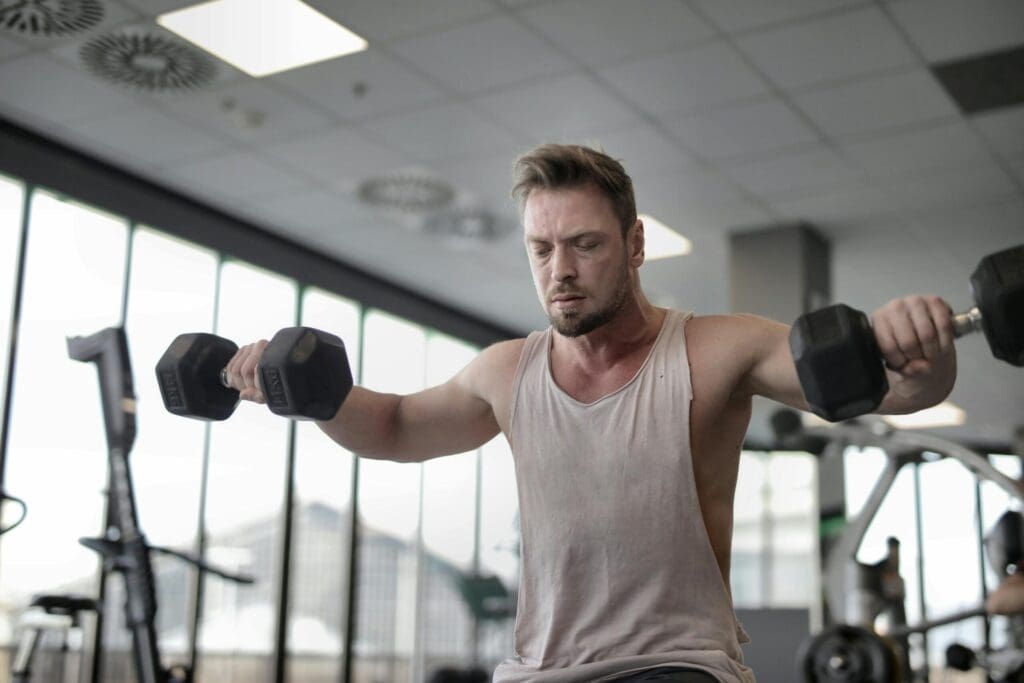We’ve all been there. You’re in the middle of a set of overhead presses or bench presses, and you feel a sharp pinch in your shoulder. You shake it off, maybe lower the weight, and finish your workout. But the next day, it’s still there—a dull ache that makes you wonder, “Is this just muscle soreness, or did I actually mess something up?”
Shoulder pain is one of the most common complaints among gym-goers, and knowing how to respond is critical. Pushing through the wrong kind of pain can turn a minor tweak into a chronic, debilitating injury that keeps you out of the gym for months.
So, how do you know when it’s safe to work through it and when it’s time to call a professional? This guide will help you decode your shoulder pain and make the smart choice.
Disclaimer: This guide is for informational purposes only and is not a substitute for professional medical advice. Always consult a qualified healthcare provider for diagnosis and treatment.
Decoding Your Pain: “Good Pain” vs. “Bad Pain”
The first step is to learn the difference between two types of pain:
Muscle Fatigue (Good Pain): This is the general soreness or burning sensation you feel in the main part of a muscle during a workout (often called DOMS, or Delayed Onset Muscle Soreness, when it appears a day or two later). It feels widespread, dull, and usually gets better with light movement and stretching. This is a normal part of getting stronger.
Joint & Tendon Pain (Bad Pain): This is the pain you need to pay attention to. It’s often described as:
- Sharp, stabbing, or pinching, especially with specific movements.
- Localized to a specific point in the shoulder joint (front, side, or back).
- Accompanied by a clicking, popping, or grinding sensation.
- A dull, deep ache that persists long after your workout, or even wakes you up at night. If your pain fits the “Bad Pain” description, it’s a signal from your body to stop and investigate.
Quick Self-Tests You Can Do Right Now
Here are a few simple tests to help you gauge the severity of your shoulder issue. Compare your injured shoulder to your uninjured one.
- The Painful Arc Test: Stand up and slowly lift your sore arm out to your side and up towards the ceiling. Do you feel a sharp pinch or pain in the middle range of motion (roughly between 60 and 120 degrees), which then eases up as you get higher? This is a classic sign of shoulder impingement.
- Range of Motion Check: Can you reach your arm behind your back as far as the uninjured side? Can you reach straight up overhead without your shoulder hiking up towards your ear? A significant loss of motion is a major red flag.
- The Sleep Test: Does the pain wake you up at night, especially when you roll onto that shoulder? Aching at rest is a strong indicator that there’s an inflammatory process happening that needs attention.
Common Culprits Behind Gym-Related Shoulder Pain
While only a professional can give you a true diagnosis, two conditions are incredibly common:
- Rotator Cuff Impingement: This happens when the tendons of your rotator cuff muscles get pinched in the narrow space at the top of your shoulder. It’s often caused by repetitive overhead movements or poor form.
- Biceps Tendonitis: This is inflammation of the tendon that attaches your biceps muscle to your shoulder, often felt as pain in the front of the shoulder. It’s frequently aggravated by pressing and curling exercises.
The Bottom Line: When to See a Physio
It’s time to stop guessing and book an appointment with a sports physiotherapist if you experience any of the following:
- The pain was sharp and sudden, caused by a specific event or lift.
- The pain has not improved after a week of resting from aggravating exercises.
- You feel weakness, instability, or a “dead arm” sensation.
- The pain is affecting your sleep or daily activities (like reaching for something on a high shelf).
- You’ve lost a significant amount of range of motion.
- You have numbness or tingling running down your arm.
Don’t Let a Small Tweak Become a Chronic Injury
The single biggest mistake active people make is ignoring a “small” pain until it becomes a big problem. Early intervention is the key to a fast and full recovery. A good physiotherapist can quickly diagnose the root cause of your pain, provide manual therapy to relieve it, and give you a specific set of exercises to fix the underlying weakness or imbalance.
Investing in one or two physio sessions now can save you from months of frustration and time away from the gym.
Ready to get it checked out? Find a trusted, sports-focused physio in your area of Calgary here.

